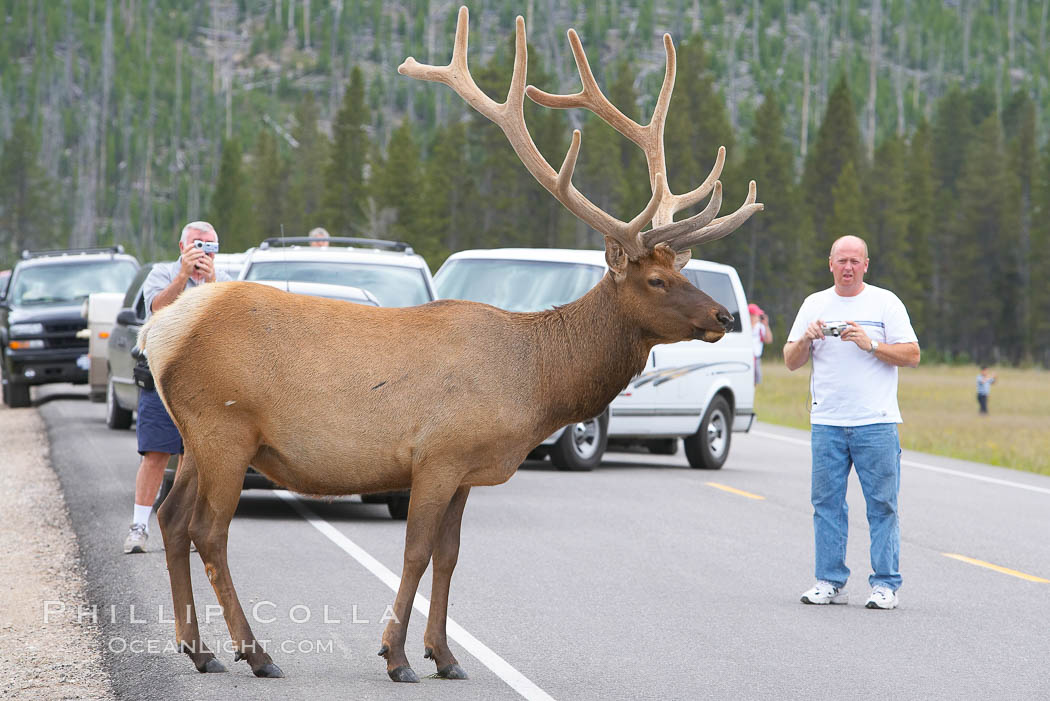
Elk, Cervus canadensis photo, Yellowstone National Park, Wyoming
Behavioral response of elk to human activity is multi-faceted and likely specifi c to conditions of the area. For example, extent of security (Hillis et al. 1991) and. compared elk movements associated with increased human activity from hunters to elk movements before any hunting seasons (22-31 Aug) and the interval immediately.

Elk Vs Moose (11 Main Differences) Wildlife Informer
A new study finds that human interference affects how much elk interact with each other. U.S. Geological Survey biologist Will Janousek said that interaction can be dangerous. "One of the things that affects how disease spreads is the amount of grouping in a population among individuals," he said. "For wild ungulates like elk, they group up.

Animals, Moose, Projects
Elk are taller and weigh more than adult caribou. Caribou typically only weigh around 400 pounds and stand just under 4 feet at the shoulder and less than 7 feet in length. While this may be bigger than some Tule elk, Roosevelt elk, by comparison, weigh up to 1,200 pounds and stand 5½ feet in length.

Elk vs. Deer Comparison Size, Habitat, Meat & Main Differences
On average, most elk stand about 4-5 feet (1.3 to 1.5 meters) high at the shoulder, with males being heavier and bigger than the females. They can even weigh twice as much as females. Imagine the height of a normal-sized sedan. That's roughly how tall elk are at the shoulder.

Elkhuman conflict on the rise in Northern California
The Irish elk ( Megaloceros giganteus ), [1] [2] also called the giant deer or Irish deer, is an extinct species of deer in the genus Megaloceros and is one of the largest deer that ever lived. Its range extended across Eurasia during the Pleistocene, from Ireland (where it is known from abundant remains found in bogs) to Lake Baikal in Siberia.

EPIC Creature of the Month! Irish Elk
Compared with European red deer, elk have longer gestation periods (255 days, versus 235 days in the European red deer),. of the native large fauna. Elk entered lower North America from Alaska, along with the grizzly bear, moose, and humans, only after the glaciers had retreated and most of America's old megafauna was extinct.
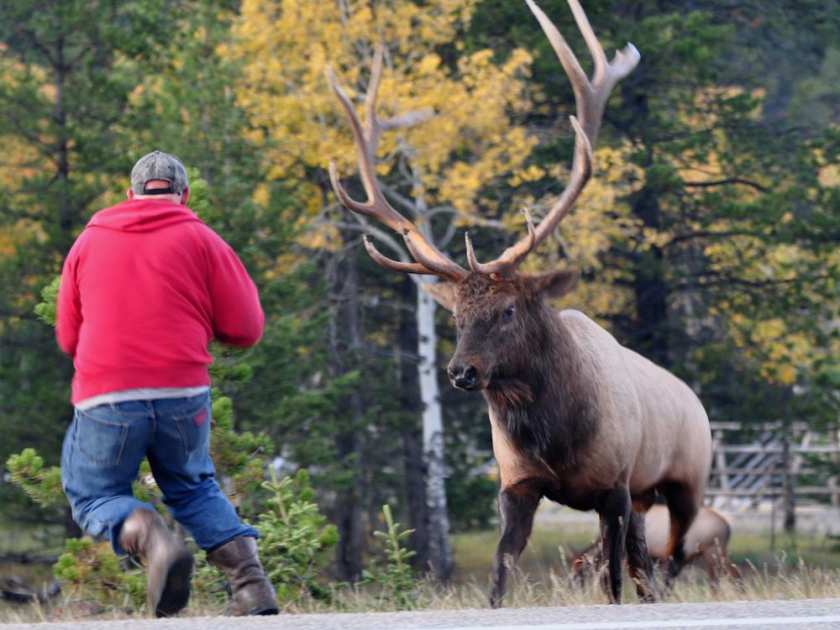
Paul's Ride Guide Elk Rut
Deer (Cervidae) are a diverse family of herbivorous, hoofed mammals known for their antlers, which are usually present only in males. Found across continents from the Arctic tundra to tropical forests, their habitats vary widely. Species range from the large moose to the pudú. Reindeer | Caribou DWG (FT) DWG (M) SVG JPG Moose DWG (FT) DWG (M) SVG

Moose Size as Compared to Elk & Deer Hunt Like A Girl Pinterest
How Big is an Elk Compared to a Person? In terms of height, humans can be as tall as elks, which averages around 5 feet at the shoulder. However, if we take into account the antlers of elks, which can grow up to 4 feet, the difference in size becomes more apparent. When comparing weight and length, elks are much heavier and larger than humans.

Moose vs Elk 5 Key Differences Explained AZ Animals
The likelihood of human/elk conflicts is influenced by the number of elk in the area, the availability of alternative food sources and hiding cover, and winter weather conditions. If elk are damaging your property, personnel from your local Fish and Wildlife office can help you evaluate damage-control options. Typical nonlethal damage-control.

Pin von Meliss Strange auf elven village people Prähistorisches
While there are few sights as majestic as a herd of elk outlined against a snowy mountainside, there is also no getting away from the fact that elk can be as territorial and aggressive as any animal in the land. And when they behave that way, their size, speed and (for the males) their antlers make for a weapon you do not want to tangle with.
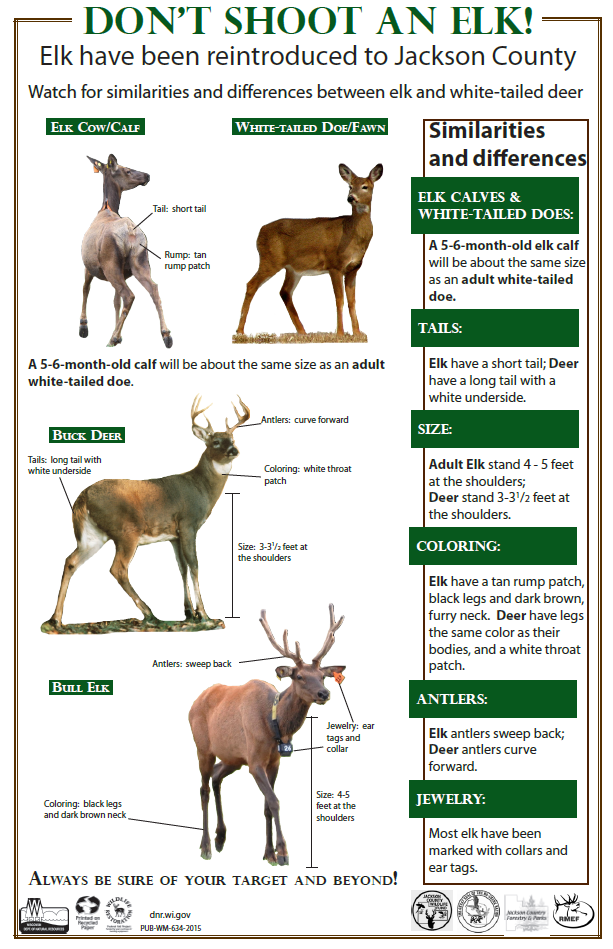
Yes There's Elk And Moose Out There Too MidWest Farm Report
Appearance Body Size Perhaps the most observable difference between elk and normal deer species is size. Species like white-tail, roe, and mule deer are smaller, with a height of 3.5 feet, length of 7 feet, and a maximum weight of 300 pounds. Elk can reach over 5 feet in height, over 9 feet in length, and weigh up to 800 pounds. Size of Antlers

Partial Wild Animal Elk Spine. Found and Natural Bone. Etsy
All elk species have an average weight range of 392 to 1,096 pounds (178-497 kg) for adult males and 375-624 pounds (170-283 kg) for adult females. With these specifics, we can easily ascertain that an elk can be about 8 times the size of an adult human. Elk Size Comparison To Car

caballo del pleistoceno Google Search Prehistoric creatures
Think You Can? Take Our A-Z-Animals Deer Quiz Other Names: Virginia Deer Range: North, Central, and South America from Southern Canada to Peru Size: Male white tails can grow up to 300 pounds, though one as large as 500 pounds has been found in Northern Canada. Females are smaller than males, weighing up to 200 pounds.
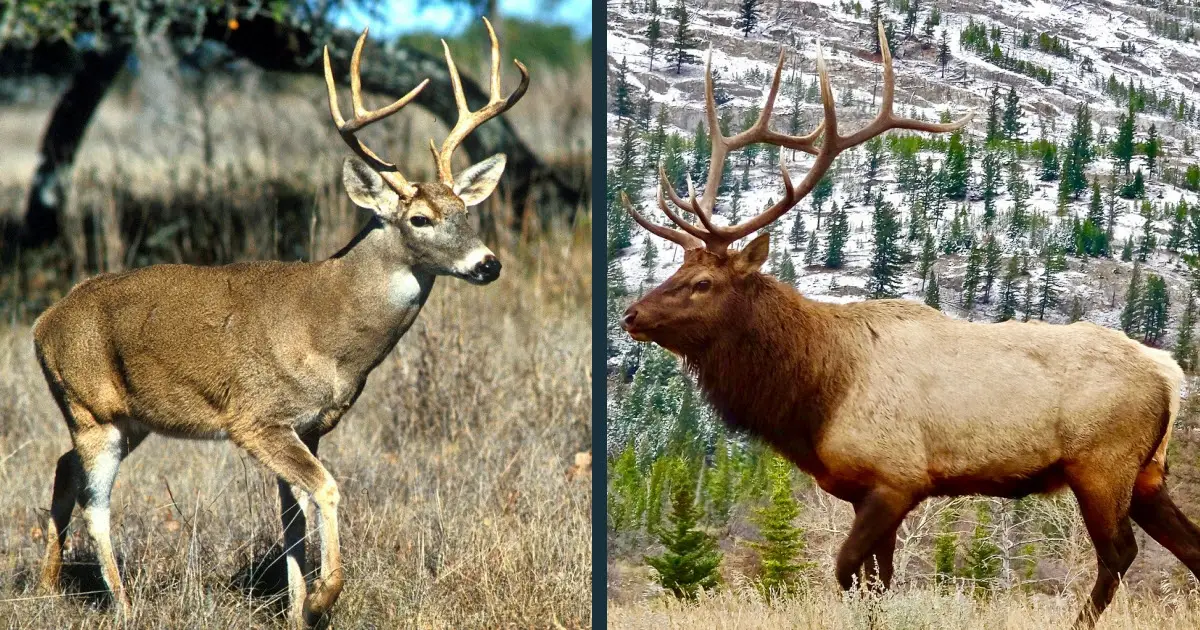
Deer vs Elk Comparison Difference Between Elk & Other Deer Species?
How big is an elk? Elks vary in size based on sex and age, but they typically reach an average height of about 4 to 5 feet at the shoulder. Male elks can weigh from 400 up to 1100 pounds, whereas female elks, called cows, typically weigh between 375 and 650 pounds.
An Irish Elk, a species who lived along side humans as recently as
Elk that are habituated to humans may exhibit bolder behaviors and tend to grow larger as a result. Furthermore, studies suggest that the availability of food sources in an individual's habitat can affect their growth rate; areas with plentiful food sources can support larger populations and ultimately larger individuals compared to habitats.
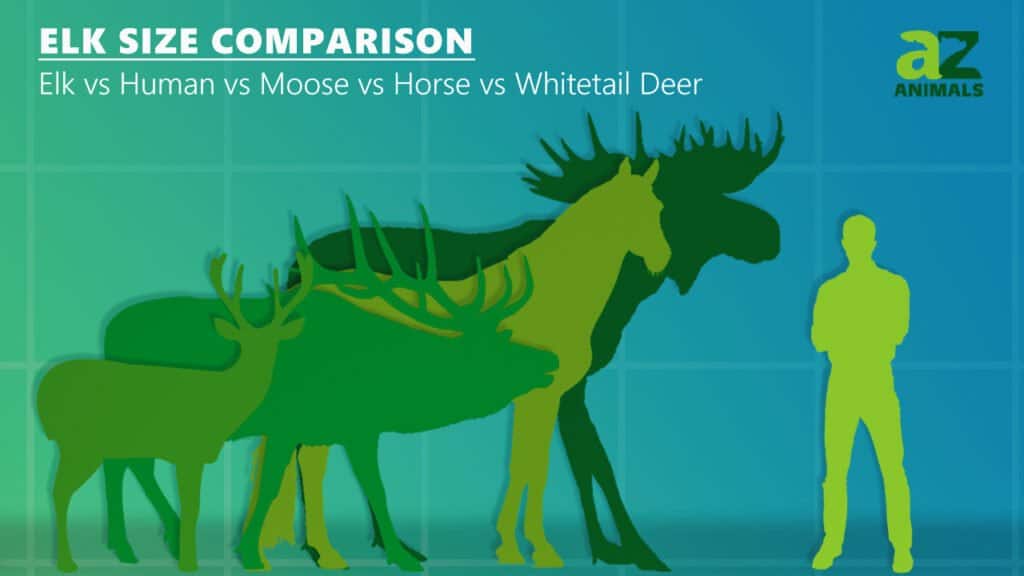
Elk Size Comparison The Biggest Deer? AZ Animals
Elk are among the noisiest ungulates, communicating danger quickly and identifying each other by sound. High-pitched squeal: Newborn to its mother, who recognizes her calf by its voice. Bark: Warning of danger. Chirps, mews and miscellaneous squeals: General conversation among the group. Bugling (bellow escalating to squealing whistle ending with grunt): Bull advertising his fitness to cows.